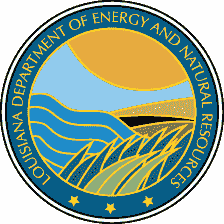Office of Conservation
Ground Water Resources Program >> FAQ For Current Well Owners
» Are there rules and regulations for current well owners to comply with from the Department of Energy and Natural Resources?
Yes, if your well was drilled after July 1, 2001. To comply with the rules and regulations, well owners must complete a Water Well Notification form and send it to the Department of Energy and Natural Resources.
» What steps do I have to take if I want to transfer ownership of a well?
Submit a Water Well Notification form to the Office of Conservation indicating the new owner of the well. To facilitate the change, you need all of the information required by the form as well as the GWR number that you received from the Office of Conservation when you originally submitted the water well notification.
» What do I have to do if some of the information about the well has changed?
A change of information is required when any of the information listed in LACE43:VI.703.B.2-4 has changed from the original water well notification submittal. To make these changes, complete a water well notification form and indicate on the form that this is a change of information and indicate the changes made to the well form.
» What is the difference between a confined and a water-table (unconfined) aquifer?
A confined aquifer is an aquifer below the land surface that is saturated with water. Layers of impermeable material are both above and below the aquifer, causing it to be under pressure so that when the aquifer is penetrated by a well, the water will rise above the top of the aquifer. A water-table, or unconfined, aquifer is an aquifer whose upper water surface (water table) is at atmospheric pressure, and thus is able to rise and fall. Water-table aquifers are usually closer to the Earth's surface than confined aquifers are, and as such are impacted by drought conditions sooner than confined aquifers.
» Why does the water level in a well change?
The water level in the aquifer that supplies a well does not always stay the same. Droughts, seasonal variations in rainfall, and pumping affect the height of the underground water levels. If a well is pumped at a faster rate than the aquifer around it is recharged by precipitation or other underground flow, then water levels in the well can be lowered. This is what is happening during drought periods. The water level in a well can also be lowered if other wells near it are withdrawing too much water.
» What determines when a well will go dry?
A well is said to have gone dry when water levels drop below a pump intake. This does not mean your well will never have water in it again, as the water level may come back through time as recharge increases. The water level in your well depends on a number of things, such as the depth of the well, the type (confined or unconfined) of aquifer the well taps, the amount of pumping that occurs in this aquifer, and the amount of recharge occurring. Wells screened in unconfined water table aquifers are more directly influenced by the lack of rain than those screened in deeper confined aquifers. A deep well in a confined aquifer in an area with minimal pumping is less likely to go dry than a shallow, water-table well.
